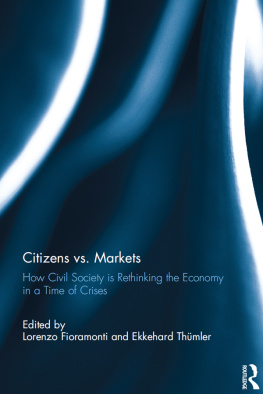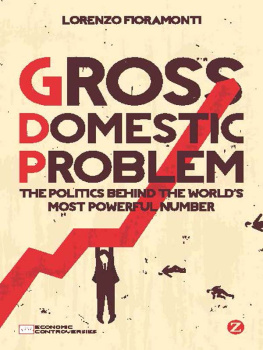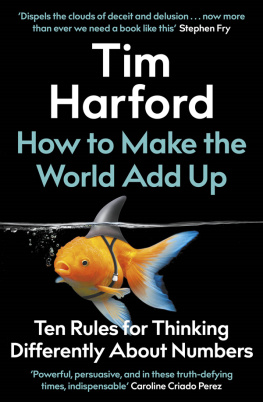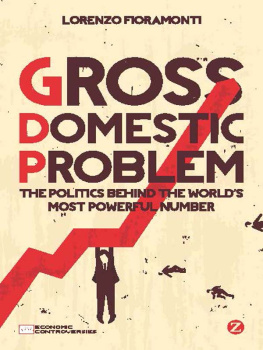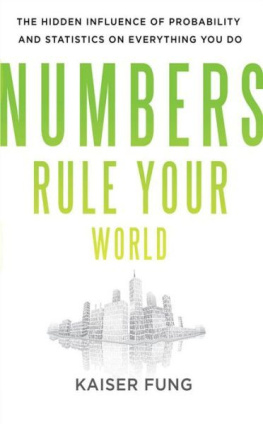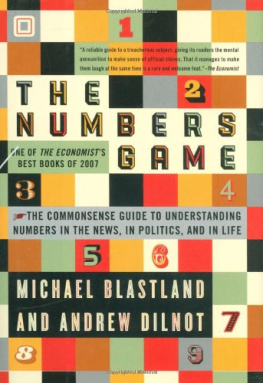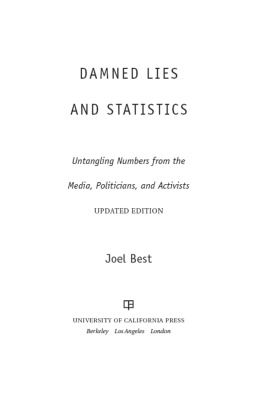
ECONOMIC CONTROVERSIES
Innovative and thought-provoking, the Economic Controversies series strips back the often impenetrable facade of economic jargon to present bold new ways of looking at pressing issues, while explaining the hidden mechanics behind them. Concise and accessible, the books bring a fresh, unorthodox approach to a variety of controversial subjects.
Also available in the Economic Controversies series:
Yanis Varoufakis, The Global Minotaur: America, Europe and the Future of the World Economy
Robert R. Locke and J.-C. Spender, Confronting Managerialism: How the Business Elite and Their Schools Threw Our Lives Out of Balance
Lorenzo Fioramonti, Gross Domestic Problem: The Politics Behind the Worlds Most Powerful Number
Heikki Patomki, The Great Eurozone Disaster: From Crisis to Global New Deal
Richard Javad Heydarian, How Capitalism Failed the Arab World: The Economic Roots and Precarious Future of the Middle East Uprisings
ABOUT THE AUTHOR
LORENZO FIORAMONTI (@globalreboot) is Associate Professor and Jean Monnet Chair in Regional Integration and Governance Studies at the University of Pretoria (South Africa), where he directs the Centre for the Study of Governance Innovation. He is also Senior Fellow at the Centre for Social Investment of the University of Heidelberg and at the Hertie School of Governance, Germany, as well as Associate Fellow at the United Nations University. He is the author of several books about development policies, global and regional governance, alternative economies and social progress indicators, including Gross Domestic Problem: The Politics Behind the Worlds Most Powerful Number (Zed Books, 2013). He blogs at www.globalreboot.org.
HOW NUMBERS RULE THE WORLD
The Use and Abuse of Statistics in Global Politics
_________________________
LORENZO FIORAMONTI

Zed Books
LONDON | NEW YORK
How Numbers Rule the World: The Use and Abuse of Statistics in Global Politics was first published in 2014 by Zed Books Ltd, 7 Cynthia Street, London N1 9JF, UK and Room 400, 175 Fifth Avenue, New York, NY 10010, USA
This ebook edition was first published in 2014
www.zedbooks.co.uk
Copyright Lorenzo Fioramonti 2014
The right of Lorenzo Fioramonti to be identified as the author of this work has been asserted by him in accordance with the Copyright, Designs and Patents Act 1988
Designed and typeset in Monotype Bulmer by illuminati, Grosmont
Index by John Barker
Cover design: www.roguefour.co.uk
All rights reserved. No part of this publication may be reproduced, stored in a retrieval system or transmitted in any form or by any means, electronic, mechanical, photocopying or otherwise, without the prior permission of Zed Books Ltd.
A catalogue record for this book is available from the British Library
Library of Congress Cataloging in Publication Data available
ISBN 978 1 78032 270 4
Contents
Acknowledgements
After the publication of Gross Domestic Problem: The Politics Behind the Worlds Most Powerful Number I received a number of invitations to discuss the book throughout the world. I set out on a journey on which I encountered wonderful people: academics, journalists, radio hosts, activists and concerned citizens, who are committed to profound, sustainable and radical change. They asked questions, were keen to challenge conventional wisdom and were looking for new ideas to inform their work. So, my first thanks go to them, as they were a profound source of inspiration.
With Georg Mildenberger and Ekkehard Thmler of the Centre for Social Investment at the University of Heidelberg, I have reflected a lot on the role of civil society and markets in governance, while Maxi Schoeman, Mzukisi Qobo and Camilla Adelle at the University of Pretoria accompanied me in the intellectual journey that has culminated in the establishment of the Centre for the Study of Governance Innovation, where most of the topics you find in this book have finally found a research home. I would also like to thank various colleagues with whom I share concerns regarding issues that range from measurement of economic performance to sustainability and market dominance, in particular Saamah Abdallah and Tony Greenham at the New Economics Foundation; Lew Daly, who leads the sustainable progress initiative at Demos; Claudius Van Wyk of Transformation Strategies; Mark Swilling, director of the Sustainability Institute at Stellenbosch University; Patrick Bond of the Centre for Civil Society at the University of KwaZuluNatal; and Sidney Luckett. Because of her commitment, friendship and intellectual guidance, I owe a lot to Susan George.
Ken Barlow, my editor at Zed Books, convinced me to finish this book in record time, as he believed that it would be a perfect complement to Gross Domestic Problem. He patiently reviewed the manuscript, corrected a number of mistakes and helped me improve the readability of the text, despite the complexity of the theme. My wife Janine has been a constant companion and an attentive reader of the manuscript. No offence to my colleagues, but she is the best intellect I know.
Finally I would like to thank my students, who have engaged me in fruitful and often challenging conversations, making me realize how important it is to teach with passion. They are full of ideas, but conventional teaching approaches tend to suppress their energy. I hope this book, like the previous ones, will further stimulate their free-thinking.
Needless to say, any flaws you find in the volume are mine alone.
To my children and to the world in which they will grow up
INTRODUCTION
The politics of statistics
We make constant use of formulas, symbols, and rules whose meaning we do not understand, [which] have in turn become the foundation of the civilization we have built up.
F.A. Hayek, The Use of Knowledge in Society, 1945
The most important things cannot be measured.
W. E. Deming
In the romantic slapstick comedy Shes Out of My League, the protagonist asks himself: How can a 10 go for a 5? The plot revolves around a love story between an ordinary airport security guy named Kirk and Molly, a beautiful lawyer-turned-event planner. On a scale of attractiveness, she is a hard 10 (gorgeous, smart and rich) and he is just a 5 (below average, skinny, working-class young man). Although Kirk is in love with Molly, and she is visibly interested in him, they act awkwardly as all odds appear stacked against them: a 10 can perhaps go with an 8 as Kirks friends explain and a 5 might manage to reach a 7, but there is no way it can possibly work out between a 5 and a 10. Mathematics is no opinion: the distance is just too wide. The numbers rule is clear. All side characters (Kirks and Mollys families, their best friends and their respective ex-partners) agree that the relationship is impossible and actively conspire against it by trying to convince the two young lovers to give up. In an admittedly predictable (yet funny) spiral of events, the two protagonists grow distant from and suspicious of one another. Their interaction is unnatural, apparently insignificant events are blown out of proportion and misunderstanding becomes pervasive. The two lovers get confused. They no longer know what they feel for each other. The relationship collapses and each of them is brought back to their respective worlds. The 10s and the 5s cannot possibly be a happy couple. Or so it seems. In the end, of course, Kirk and Molly get together and live happily ever after. Despite the negative odds, love triumphs. Both protagonists overcome the number syndrome and let their hearts prevail. What appeared to be mathematically impossible is defeated by the irrationality of love. Romantic comedies are notorious for predictable and rather cheesy endings.
Next page


